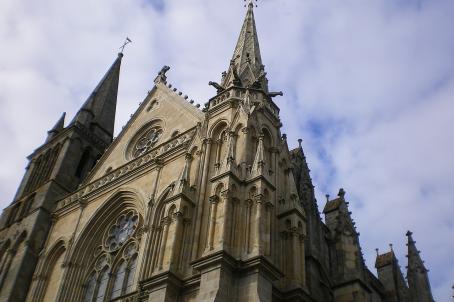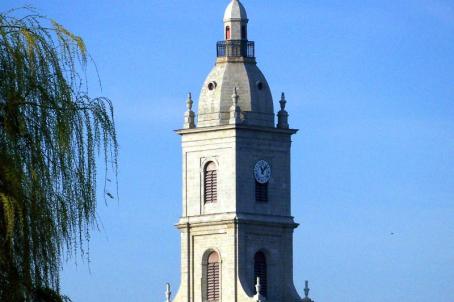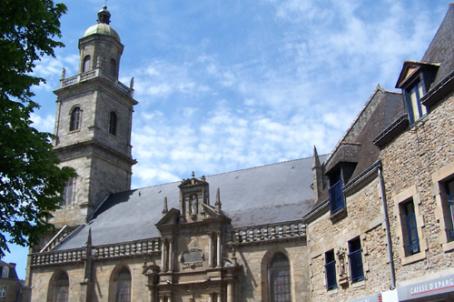Chapel Notre-Dame de Penmern, Baden
Built in the 15th century on a place rich in remains from the Neolithic era, Roman and feudal, the chapel Notre Dame de Penmern stands near the Gulf of Morbihan. The Romanesque chapel was enlarged in the eighteenth and 19th century. Its simple architecture highlights its decorative elements, some of which are classified: a blue vault adorned with stars and 2 models of ships.
About this building
Notre Dame de Penmern Chapel (which means in Breton the top of marshes) dominates the mouth of the Kernormand stream that flows into the Gulf of Morbihan in Baden.
This locality had a Neolithic population, as the numerous megalithic monuments attest. There are also traces of the Roman road Vannes-Locmariaquer. The arrival of Breton around the fifth century is marked by the remains of an old chapel (at Moustéran) built by Saint Gildas (Celtic monk) from which Saint Bieuzy would have embarked upon his journey to the Abbey of Rhuys. The building was destroyed by the Normans in the tenth century. In the feudal period, Baden was dependent on the lordship of Largouët, and twenty manors and chapels and a convent belonging to the Templars were built in the area.
The chapel Notre Dame, built to a rectangular plan and in the Romanesque style, retains the feel of the time of its construction (XVth century) through its west facade, the south door and two buttresses. From the sixteenth to the nineteenth century, there was a spire above the porch with oculus, a sacristy and two arms that draw a false transept pierced by two semicircular windows.
Restored and finished in the nineteenth century, the interior of the Penmern Chapel offers a remarkable decor: a blue paneled ceiling adorned with stars is enhanced by the abundant light that penetrates through large openings of the simple cross.
There is a painting by G. Girodon (20th century) and two magnificent models of warships classified as "historical monuments". There is also a 19th century altarpiece and various statues. On the last Sunday of August the pardon is celebrated. Traditionally local villagers would parade horses, but nowadays they have been replaced by a procession of farm tractors.





